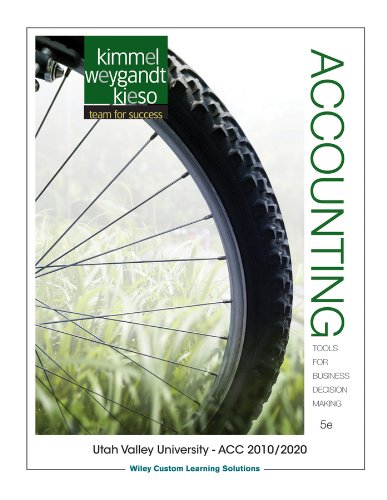FireOut, Inc. manufactures steel cylinders and nozzles for two models of fire extinguishers: (1) a home fire
Question:
FireOut, Inc. manufactures steel cylinders and nozzles for two models of fire extinguishers: (1) a home fire extinguisher and (2) a commercial fire extinguisher. The home model is a high-volume (54,000 units), half-gallon cylinder that holds 2 1/2 pounds of multi-purpose dry chemical at 480 PSI. The commercial model is a low-volume
(10,200 units), two-gallon cylinder that holds 10 pounds of multi-purpose dry chemical at 390 PSI. Both products require 1.5 hours of direct labor for completion. Therefore, total annual direct labor hours are 96,300 or [1.5 hrs. 3 (54,000 1 10,200)]. Expected annual manufacturing overhead is $1,557,480. Thus, the predetermined overhead rate is $16.17 or
($1,557,480 4 96,300) per direct labor hour. The direct materials cost per unit is $18.50 for the home model and $26.50 for the commercial model. The direct labor cost is $19 per unit for both the home and the commercial models.
The company’s managers identified six activity cost pools and related cost drivers and accumulated overhead by cost pool as follows.
Expected Use Use of of Drivers by Estimated Cost Product Activity Cost Pools Cost Drivers Overhead Drivers Home Commercial Receiving Pounds $ 70,350 335,000 215,000 120,000 Forming Machine hours 150,500 35,000 27,000 8,000 Assembling Number of parts 412,300 217,000 165,000 52,000 Testing Number of tests 51,000 25,500 15,500 10,000 Painting Gallons 52,580 5,258 3,680 1,578 Packing and shipping Pounds 820,750 335,000 215,000 120,000 $1,557,480 Instructions
(a) Under traditional product costing, compute the total unit cost of each product.
Prepare a simple comparative schedule of the individual costs by product (similar to Illustration 17-10 on page 903).
(b) Under ABC, prepare a schedule showing the computations of the activity-based overhead rates (per cost driver).
(c) Prepare a schedule assigning each activity’s overhead cost pool to each product based on the use of cost drivers. (Include a computation of overhead cost per unit, rounding to the nearest cent.)
(d) Compute the total cost per unit for each product under ABC.
(e) Classify each of the activities as a value-added activity or a non–value-added activity.
(f) Comment on (1) the comparative overhead cost per unit for the two products under ABC, and (2) the comparative total costs per unit under traditional costing and ABC.AppendixLO1
Step by Step Answer:

Accounting Tools For Business Decision Making
ISBN: 9781118771112
5th Edition
Authors: Kimmel, Wetlands, Kieso





